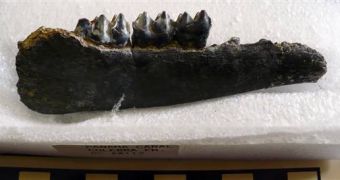More than 500 fossils of teeth and bones belonging to species of rodents, horses, crocodiles and turtles found near the Panama Canal, dated to have lived as far as 20 million years ago could provide some information regarding the period when the North and South American continents became connected to each other, say geologists of the Smithsonian Institution. The fossils have been found during the digging phase in the Panama Canal, which is currently going through a modernization stage that will end with the widening of the canal in order to accommodate bigger commercial ships.
"With these discoveries we will be able to get more information about the process by which the continual land bridge was formed," said Camilo Montes of the Smithsonian Institution. To ensure that valuable items are not destroyed during digging, the local government invited researchers of the Smithsonian Institution to accompany the engineers involved in the project.
Current estimations place the date of the collision between the South American and the Caribbean tectonic plates somewhere around 15 million years ago, a phenomenon that eventually created the thin strip connecting the South and North American continents about 3 million years ago. This provided the bridge that brought the mammals on both sides together.
However, there is not much that we know about which individual species came from which of the two continents, but by studying the layers of rock that contained the fossils researchers could get an idea about the time when the animals where found on one side of the strip only. "We will be able to get a much more precise date for when the continents started to close together," said Montes.
As the two continents connected the migration of the animals from one side to the other was made possible, at the same time resulting in a change in the world's clime due to the formation of the Pacific and the Atlantic oceans, which in turn triggered the appearance of new species. Knowing when the two oceans formed could also provide valuable insight into how the global warming is currently impacting the clime of the planet.
"The closure could be linked to an ice age which affected North America around the same time, perhaps by altering ocean currents. Some have argued the timing of the ice age is a coincidence. A more accurate timeline for the closure could tell us whether those two things were separate or linked," Montes said.

 14 DAY TRIAL //
14 DAY TRIAL //